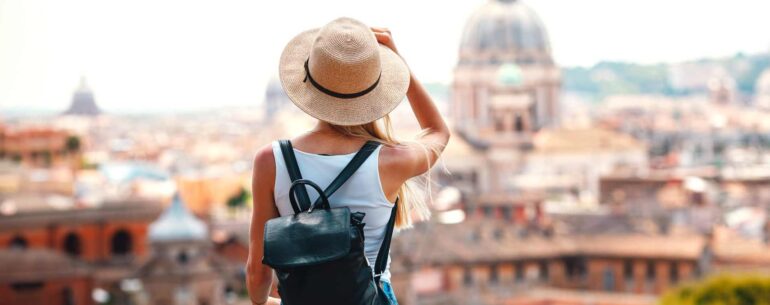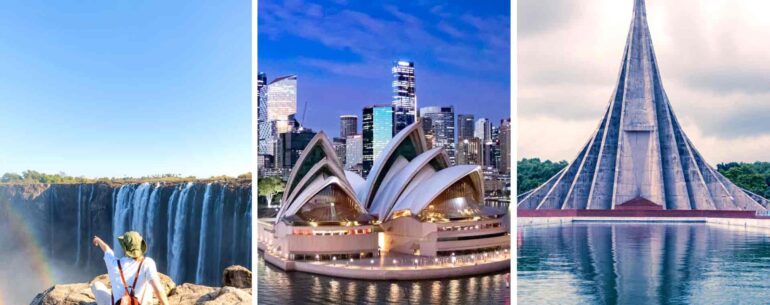Table of Contents
Strasbourg is an Alsatian city, on the border between France and Germany. The medieval town is a bubbling stew of European cultures, which is self-evident from the building and the structures gracing the skyline of Strasbourg. The historical city centre was the first in the whole world to be given the UNESCO world heritage title.
Strasbourg was once called ‘Argantorati’ – the city of gold. This fact points to the most important geographical feature of the town: the confluence of River Rhine and River Ill. Even though the gold sifting and panning days of Strasbourg are long gone, the city still glitters like a gem due to its beauty and grandeur. Strasbourg, in a few words, is like a Disney fairytale that has come to life. The city is also graced to be the location of the parliament of the European Union. The international airport in the south-west of the Strasbourg provides quick access. Strasbourg’s soul glows through its very pavements, but there are a few places in the city where the culture thrives, cuisine relishes, and the sunshine delights more.
The Strasbourg Cathedral
Victor Hugo called it both delicate and gigantic; this enormous structure of medieval architecture is a sight to behold. The sandstone bricks of the Strasbourg Cathedral have been carved so delicately that it looks like lacework. The building was completed in 1439, and for two hundred and twenty-seven years it stood as the tallest human-made structure in the world. The cathedral was built predominantly in Romanesque style, but Gothic architecture later revolutionized the construction method. The rose window filters in the light entering into the church and is a magnificent work of art in itself. The astronomical clock on the southern wall of the cathedral is mysteriously accurate. For a timing device that was built in 1354, it precisely calculates equinoxes and leap-years. Many legends are surrounding the Strasbourg Cathedral as well. According to one legend, the immense beauty of the church has captivated the devil himself. Trapped in this holy prison, the devil brings up the wind to help him glide away, but he cannot escape.
La Petite France
La Petite France or ‘Little France’ is stuck in time. Canals, built in the 16th and 17th century, are crisscrossing this area of Strasbourg. The waters of River Ill fill these canals curling around the German-style timber homes. La Petite France is a part of the Grand Ile, the large island surrounded by the river and is the most prominent tourist spot of the city. The watery highways are lined with flowers and bushes, and the timber homes provide this cosy and comfy feeling to the tourists. La Petite France was once a residence of the millers, fishermen and tanners of the city, who used the canals for their businesses. It is also the reason why the island is still sometimes called “Quarter of Tanners”. Escape the ones and zeros of business as usual and become lost in one of the alleyways of Strasbourg.
The Museums of Strasbourg
The museums of the city enrich both young minds and amaze adults. Tourists visiting Musée Alsacien come to observe the traditional life of the region through various times of the city’s history. The museum has a collection of costumes and utensils from the 7th to the 19th century on display. Musée D’art Moderne et Contemporain is where artists are cherished and revered for the talent. Exhibitions introduce new and budding artists to the tourists coming to view the collections but also include artworks by famous masters like Max Ernst and Gustave Dore. The Zoological Museum of Strasbourg amasses a rich collection of specimens that define the natural history of the world. The impressive exhibition of 1800 birds and 1500 mammals invites tourists to know more about nature. If you are interested in the prehistory of the Alsace Region, head to the Archeological Museum and witness artefacts from the Bronze Age. Some ancient relics at this museum are 600,000 years old.
Cuisine of Strasbourg
Being on the very edge of France, with the German Black Forest only 30 kilometres from the city, Strasbourg has garnered a broad spectrum of tasty dishes over the years. In a nutshell, the cuisine served in the city’s restaurants is hearty like German meals but has the presentation and theatricality of French fine dining. A hit with the tourist and easy to eat it is the Tarte flambé, which looks like a pizza but has more cream, onion and truckloads of bacon. Since Strasbourg was a fishing town, there is a traditional fish stew made by the local eateries with spaetzle noodles. Another local dish popular with tourists is the Alsatian Chaoucroute, served with sauerkraut and braised pork. When travelling to Strasbourg, do not leave town before sipping a Gewürztraminer.
Strasbourg is waiting for you to be discovered. Even if you have already visited the city, tour it once moreas there is always something new to explore in Strasbourg. The calm of the Alsatian countryside, ample sunshine and a glass full of Pinot Noir can all be yours. Just call Travelhouseuk at 020 3745 5784 and be on your way to a grand city break to Strasbourg.



Leave a Reply
You must be logged in to post a comment.